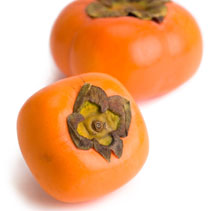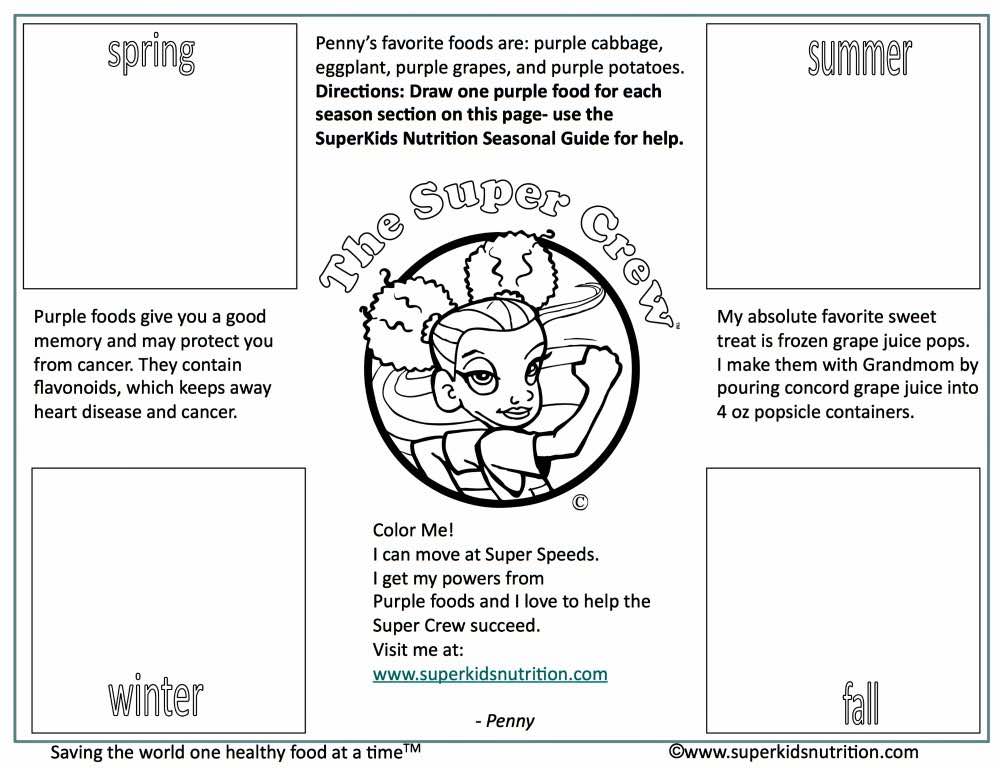
Persimmons can be a tasty winter fruit for your kids and family to enjoy!
Prelude to the Persimmon
In the world of persimmons, there are many different varietals, but only two specific types are available commercially. The first type is known as the Hachiya persimmon and resembles a miniature pumpkin. It’s also the most widely available type and represents 90% of the persimmons sold. The remaining 10% are known as Fuyus, and are similar in appearance to a squat, orangey red tomato. Hachiya persimmons are ripe when their innards become juicy and jelly-like, with an outer texture that is mushy to the touch. The Fuyu is considered ripe even when its skin is firm and has a crisp consistency similar to that of an apple.
Nutritional Nods
A medium persimmon contains 120 calories and is an excellent source of Vitamin A, with 50% of the Daily Value coming from 1 serving of this festive fruit. Persimmons are free of cholesterol, sodium, and fat, making them an ideal addition to any snack or meal. They boast trace amounts of iron and calcium (2% each of the Daily Value) and are an excellent source of dietary fiber, providing 6 grams/serving. Other accolades include their antioxidant power (they contain 20% of the Daily Value of Vitamin C) and their composition of phytochemicals, such as carotenoids and bioflavanoids. These nutritional properties translate into many health benefits, such as a healthier heart and immune system, a decreased risk of certain cancers, and healthy vision maintenance.
 Fun Facts
Fun Facts
- Tea can be made from fresh or dried persimmon leaves
- Persimmons were introduced to the United States from China in the 1800s
- During the Civil War, some Southern families boiled, roasted, and ground persimmon seeds to produce a drink similar to coffee
- Persimmon’s season is from September-December. See our Super Crew seasonal activity guides
Selection and Storage of Persimmons
Fresh ripe persimmons are a deep orange color with a smooth, glossy exterior and green leaves at the crown, much like a strawberry. Ripe persimmons can spoil quickly, so if you plan to purchase ripe persimmons store them in the refrigerator prior to eating. Or, better yet, choose an under-ripe fruit and ripen at room temperature. Persimmons can also be frozen for 6-8 months.
What to Do With a Persimmon
Persimmons are a functional fruit with many edible uses. They can be put into your child’s lunchbox unpeeled and can be eaten sliced or whole like a pear. You can dice and freeze them, adding them to a smoothie as a thickener. Persimmons can also be dried, at which point they change from a crisp consistency to a soft, date-like, chewy texture. Eaten this way, they are deliciously sweet and taste more like candy than dried fruit! In baked goods, the ripe Hachiya and overripe Fuyu mashed into a seedless pulp, can function as an all-natural sweetener and can be incorporated into various bread, cookie, pie, and pudding recipes.
Learn about more unique fruits and vegetables your kids will love!












